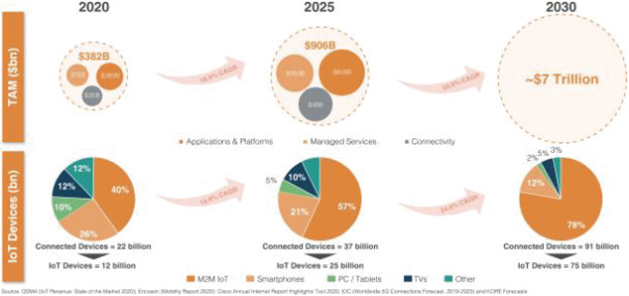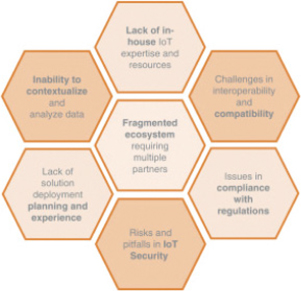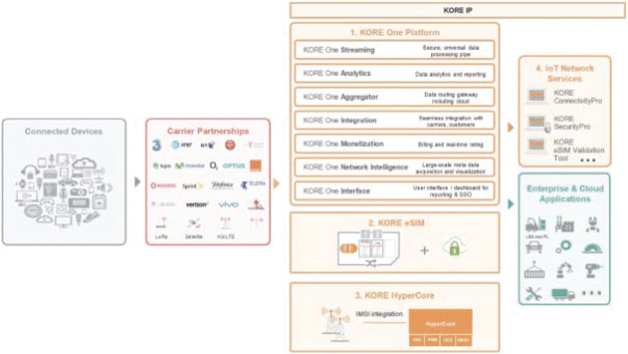The information in this preliminary prospectus is not complete and may be changed. We may not sell these securities until the registration statement filed with the Securities and Exchange Commission is effective. This preliminary prospectus is not an offer to sell these securities and it is not soliciting an offer to buy these securities in any jurisdiction where the offer or sale is not permitted.
SUBJECT TO COMPLETION, DATED MAY 9, 2022

KORE GROUP HOLDINGS, INC.
8,911,745 COMMON STOCK ISSUABLE UPON THE EXERCISE OF WARRANTS
12,000,000 SHARES OF COMMON STOCK UNDERLYING THE EXCHANGEABLE NOTES
186,326 SHARES OF COMMON STOCK
This prospectus relates to the resale from time to time of 12,186,326 shares of common stock, par value $0.0001 per share (the “common stock”) of KORE Group Holdings, Inc. (the “Company”), which consists of an aggregate of (i) 12,000,000 shares of common stock underlying the Exchangeable Notes (as defined herein); and (ii) 186,326 shares of common stock issued as compensation to certain advisors of the Company in connection with the Business Combination. We collectively refer to the selling securityholders covered by this prospectus as the “Selling Securityholders.” This prospectus also relates to the issuance by us of up to 8,911,754 shares of common stock upon the exercise of outstanding Company warrants.
On September 30, 2021, we consummated the transactions contemplated by that certain Agreement and Plan of Merger dated March 12, 2021, as amended on July 27, 2021 and September 21, 2021 (the “Merger Agreement”), by and among Cerberus Telecom Acquisition Corp. (“CTAC”), King Pubco, Inc. (“KORE”), a Delaware corporation and wholly owned subsidiary of Cerberus Telecom Acquisition Holdings, LLC (the “Sponsor”), an affiliate of CTAC, King Corp Merger Sub, Inc. (“Corp Merger Sub”), a Delaware corporation and direct, wholly owned subsidiary of the Sponsor, King LLC Merger Sub, LLC (“LLC Merger Sub”), a Delaware limited liability company and direct wholly owned subsidiary of KORE, and Maple Holdings Inc. (“Maple”), a Delaware corporation, which, among other things, provided for (i) the merger of CTAC with and into LLC Merger Sub (the “Pubco Merger”), with LLC Merger Sub being the surviving entity of the Pubco Merger and KORE as parent of the surviving entity, (ii) immediately prior to the First Merger (as defined below), the contribution by Sponsor of 100% of its equity interests in Corp Merger Sub to KORE (the “Corp Merger Sub Contribution”), as a result of which Corp Merger Sub became a wholly owned subsidiary of KORE, (iii) following the Corp Merger Sub Contribution, the merger of Corp Merger Sub with and into Maple (the “First Merger”), with Maple being the surviving corporation of the First Merger, and (iv) immediately following the First Merger and as part of the same overall transaction as the First Merger, the merger of Maple with and into LLC Merger Sub (the “Second Merger” and, together with the First Merger, being collectively referred to as the “Mergers” and, together with the other transactions contemplated by the Merger Agreement, the “Transactions” and the closing of the Transactions, the “Business Combination”), with LLC Merger Sub being the surviving entity of the Second Merger and KORE being the sole member of LLC Merger Sub. In connection with the Business Combination, KORE changed its name to “KORE Group Holdings, Inc.”
Each public and private warrant of CTAC outstanding immediately prior to the Mergers was automatically converted into warrants of the Company on a basis.
one-for-one
As part of the Business Combination, we entered into that certain backstop agreement (“Backstop Agreement”) dated July 27, 2021 between KORE Wireless Group, Inc., a wholly owned subsidiary of KORE, and Drawbridge Special Opportunities Fund LP, an affiliate of Fortress Credit Corp. (“Fortress”), pursuant to which Fortress agreed to purchase senior unsecured convertible notes in an aggregate principal amount of up to $120,000,000 issued, from time to time, by KORE Wireless Group, Inc (the “Exchangeable Notes”). The Company agreed, pursuant to the Backstop Agreement, to register the resale of the shares of common stock issued in exchange for the Exchangeable Notes.
We will receive the proceeds from any exercise of the warrants for cash, but not from the resale of the shares of common stock registered hereby by the Selling Securityholders. We will bear all costs, expenses and fees in connection with the registration of the shares of common stock. The Selling Securityholders will bear all commissions and discounts, if any, attributable to their respective sales of the shares of common stock.
We are registering the offer and sale of the securities described above to satisfy certain registration rights we have granted. Our registration of the securities covered by this prospectus does not mean that either we or the Selling Securityholders will issue, offer or sell, as applicable, any of the securities. The Selling Securityholders and any of their permitted transferees may offer and sell the securities covered by this prospectus in a number of different ways and at varying prices. Additional information on the Selling Securityholders, and the times and manner in which they may offer and sell the securities under this prospectus, is provided under “Selling Securityholders” and “Plan of Distribution” in this prospectus.
Our common stock trades on the New York Stock Exchange (the “NYSE”) under the ticker symbol “KORE” and our warrants trade on the NYSE under the ticker symbol “KORE WS”. On May 5, 2022, the closing sale price of our common stock as reported by NYSE was $4.53 per share and the closing price of our warrants was $0.61.
Investing in shares of our common stock or warrants involves risks that are described in the “Risk Factors” section beginning on page 5 of this prospectus.
Neither the Securities and Exchange Commission (the “SEC”) nor any state securities commission has approved or disapproved of the securities to be issued under this prospectus or determined if this prospectus is truthful or complete. Any representation to the contrary is a criminal offense.
The date of this prospectus is , 2022.



